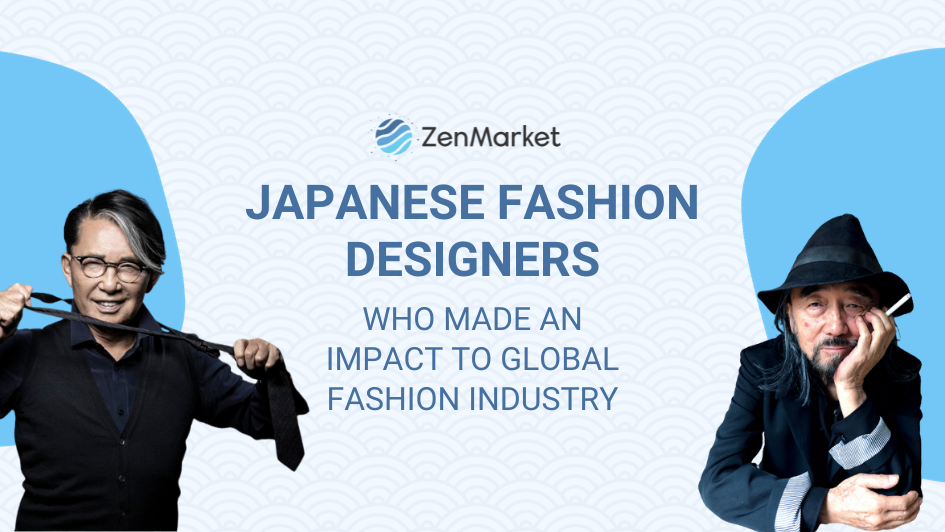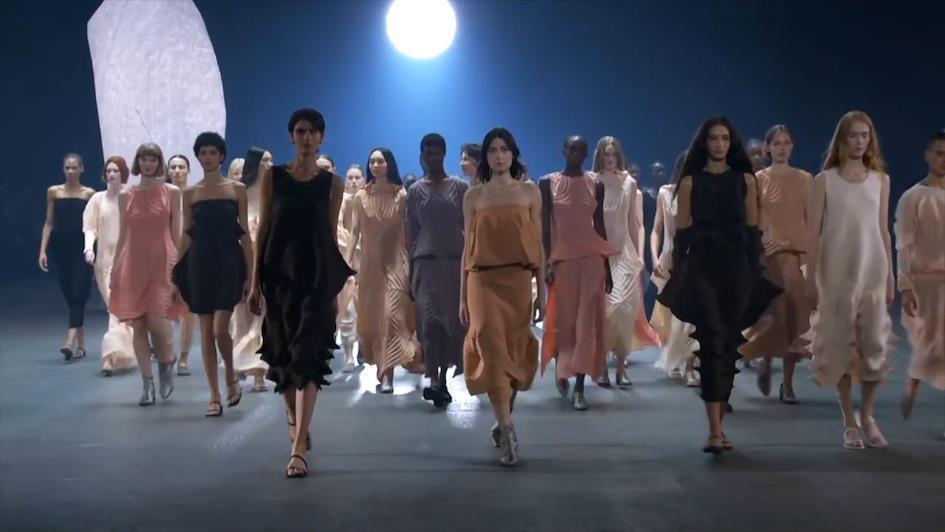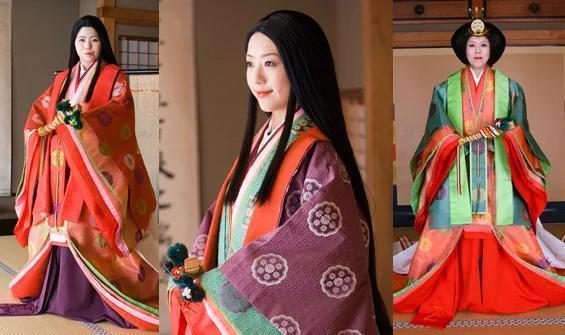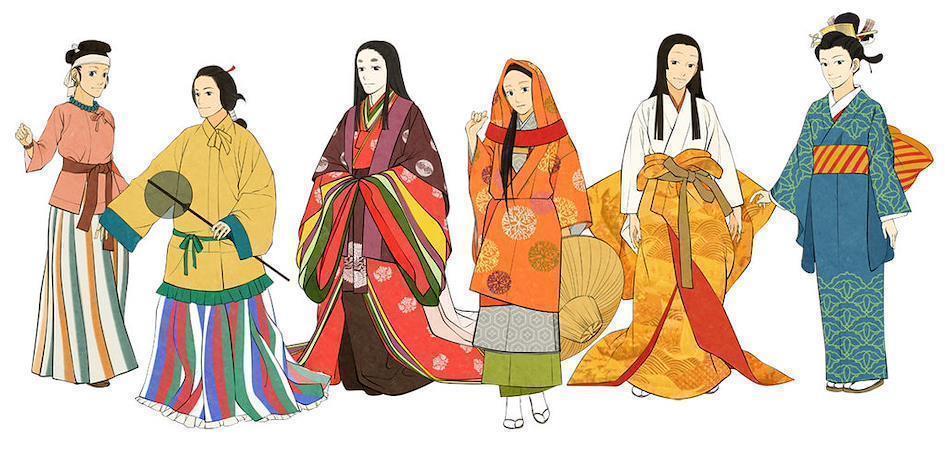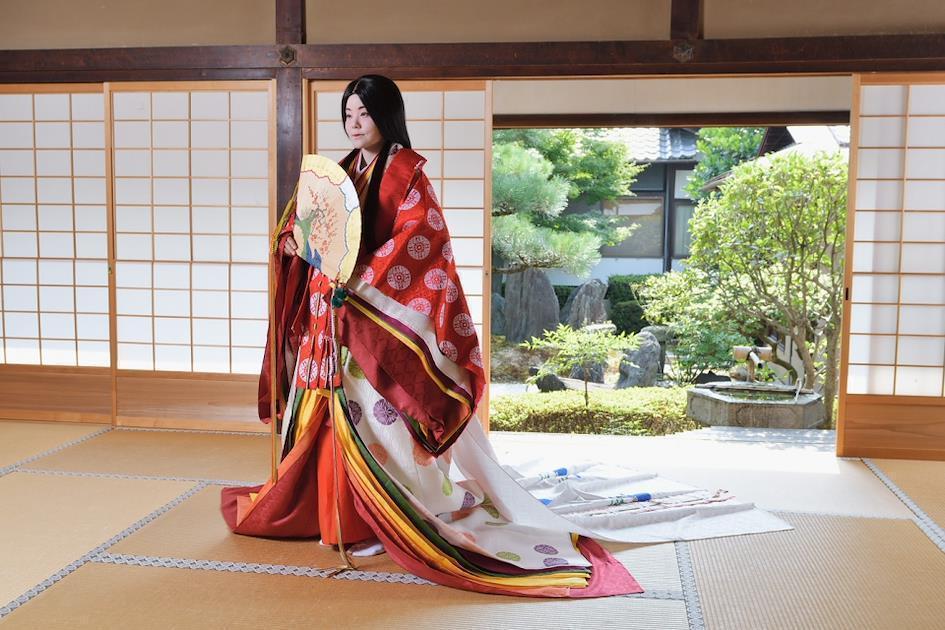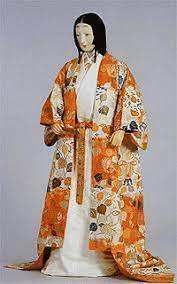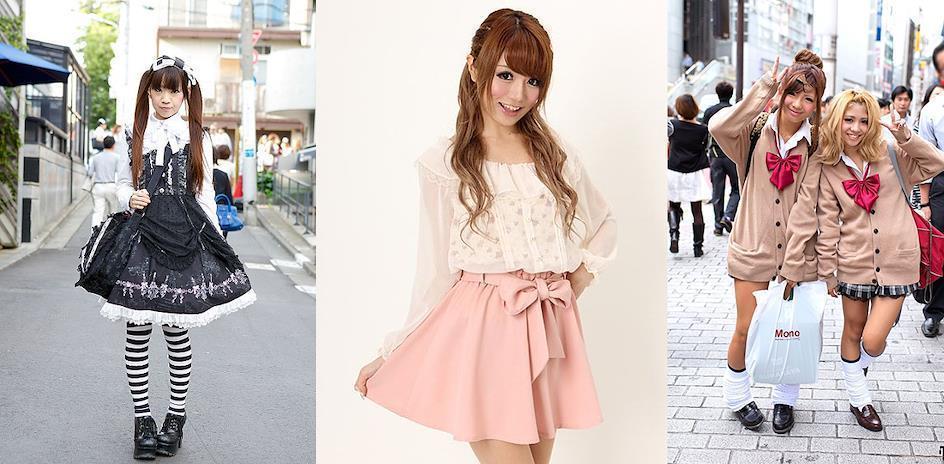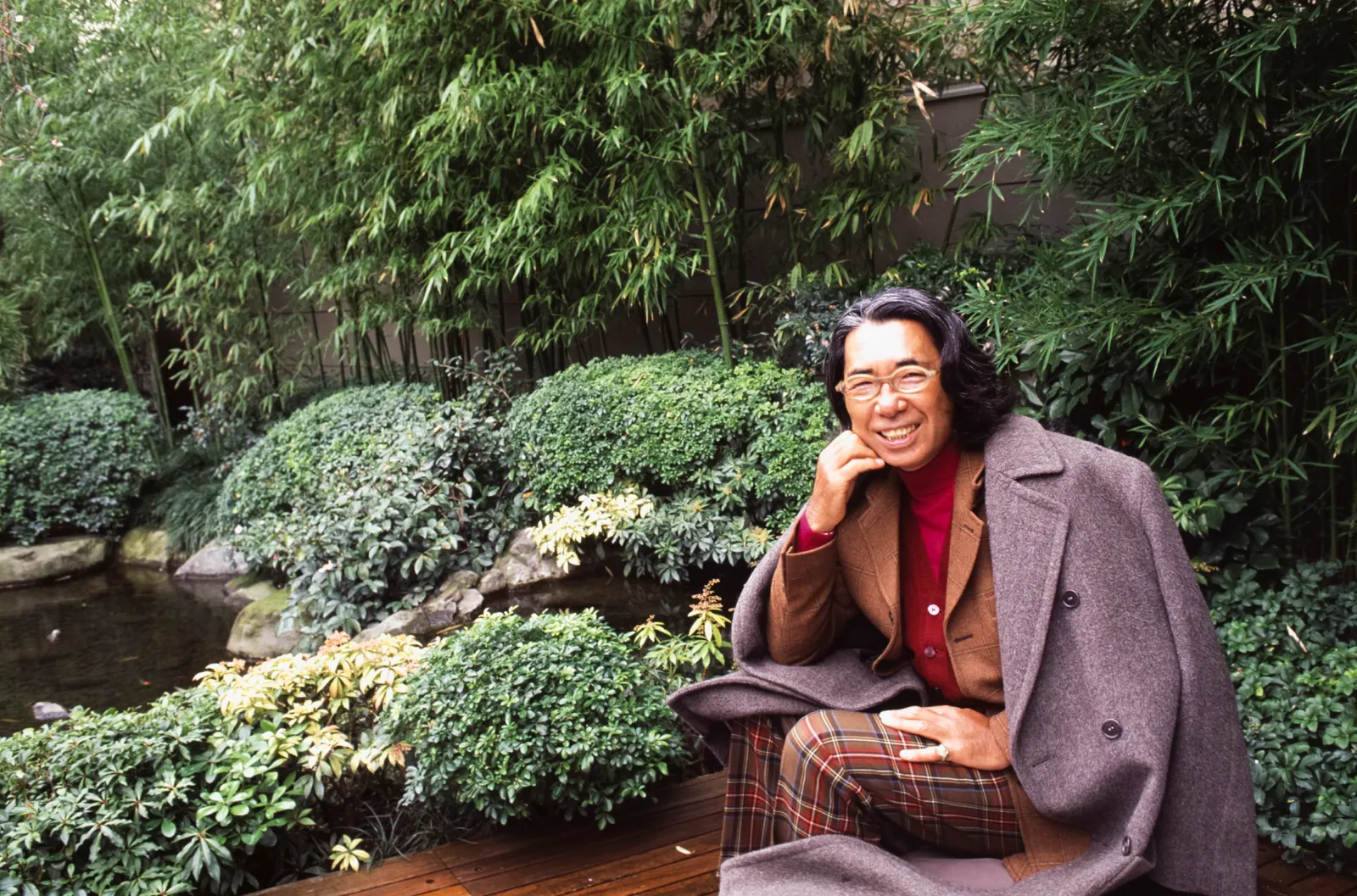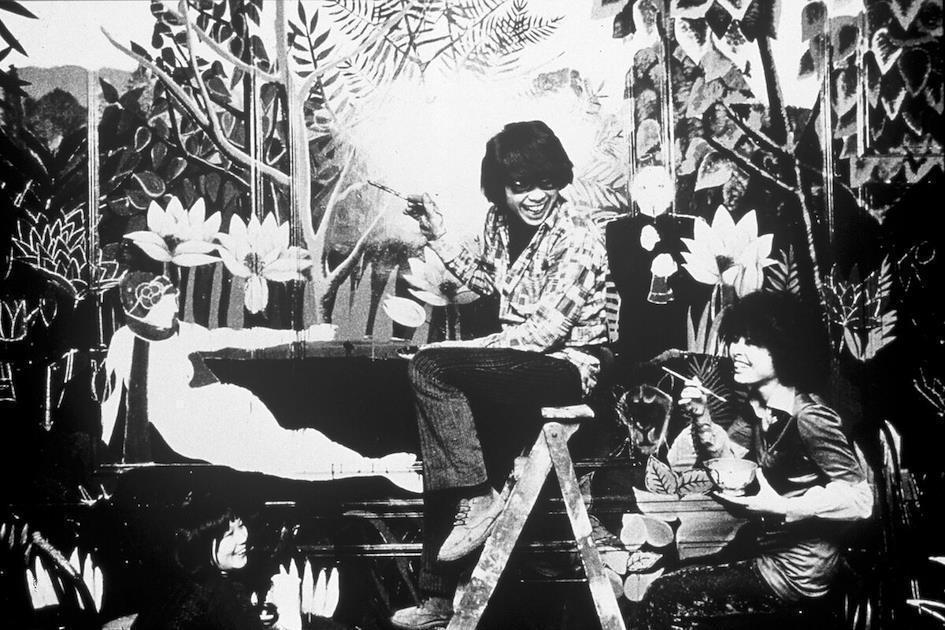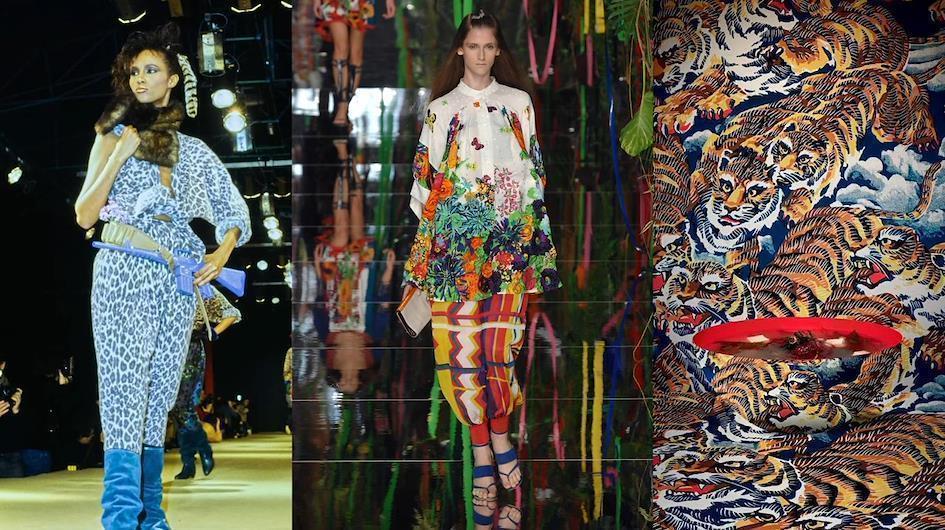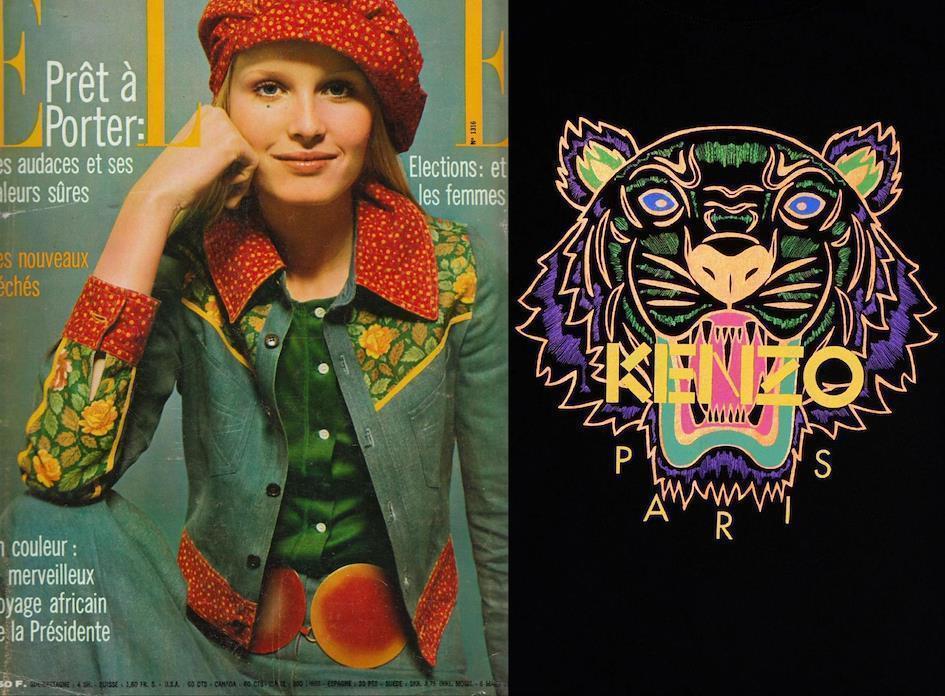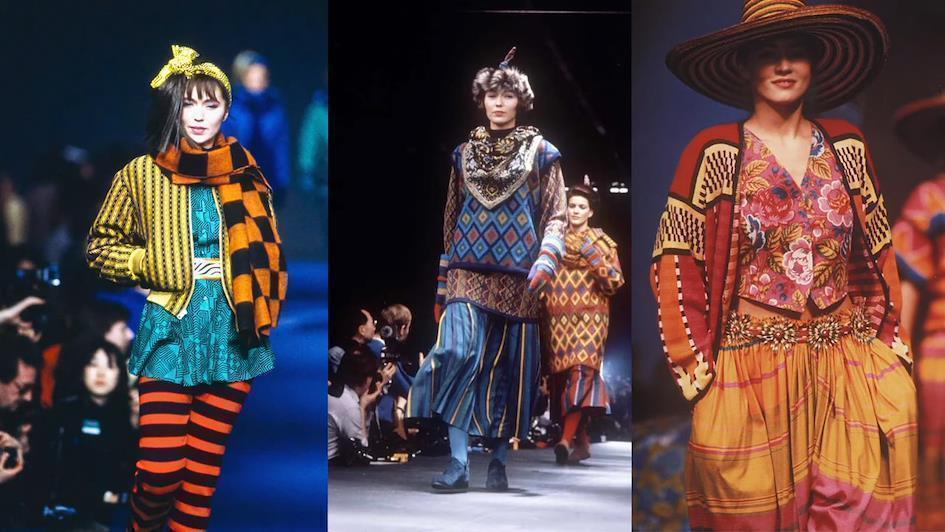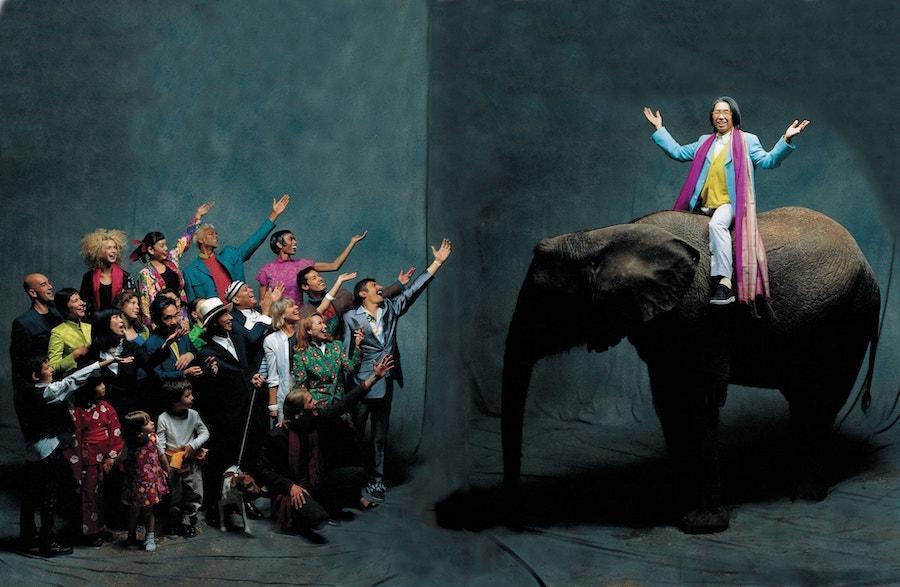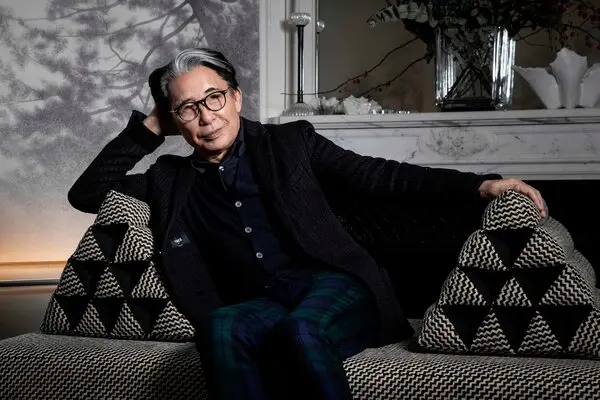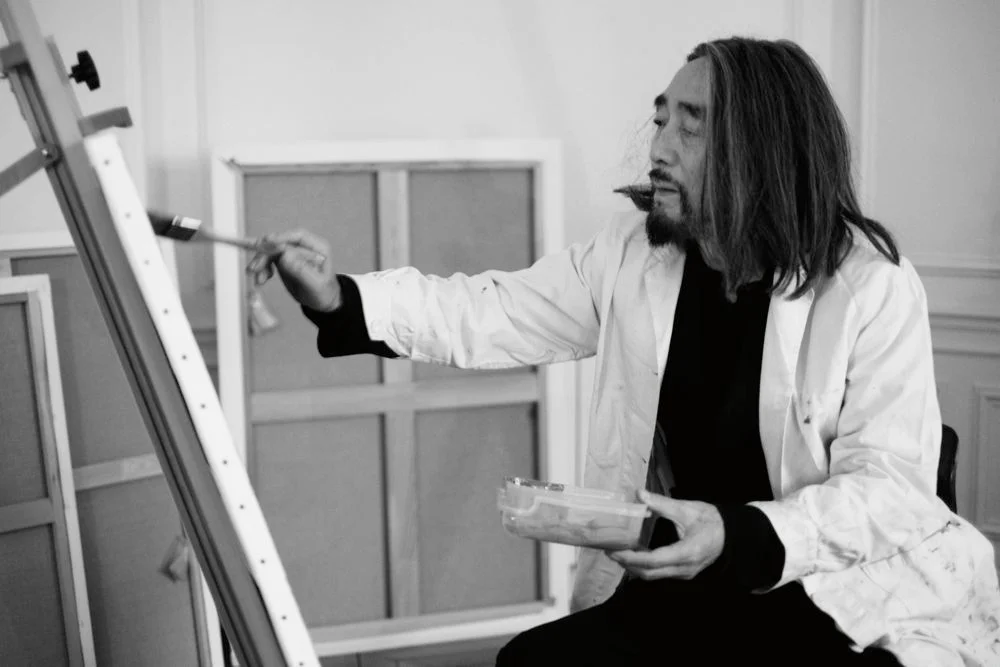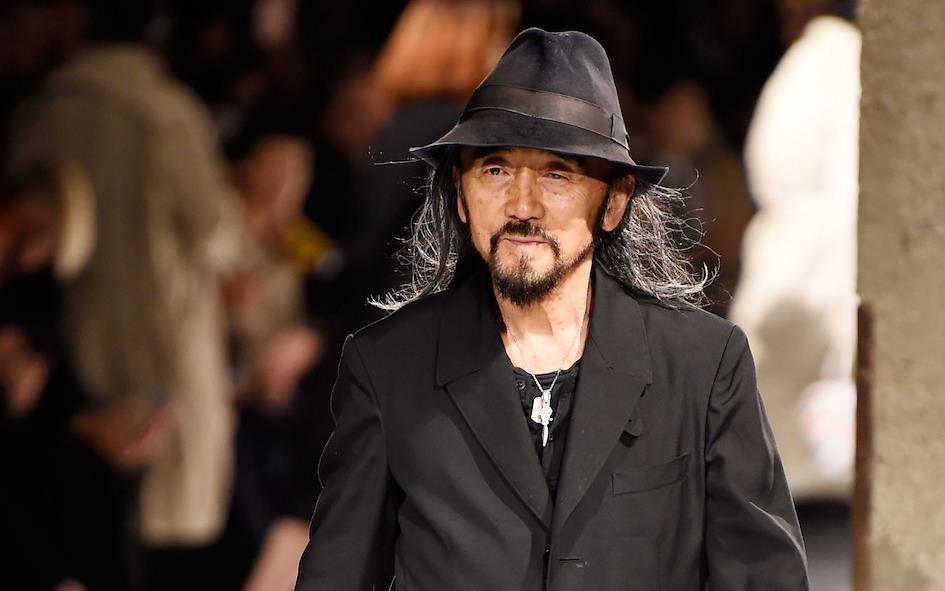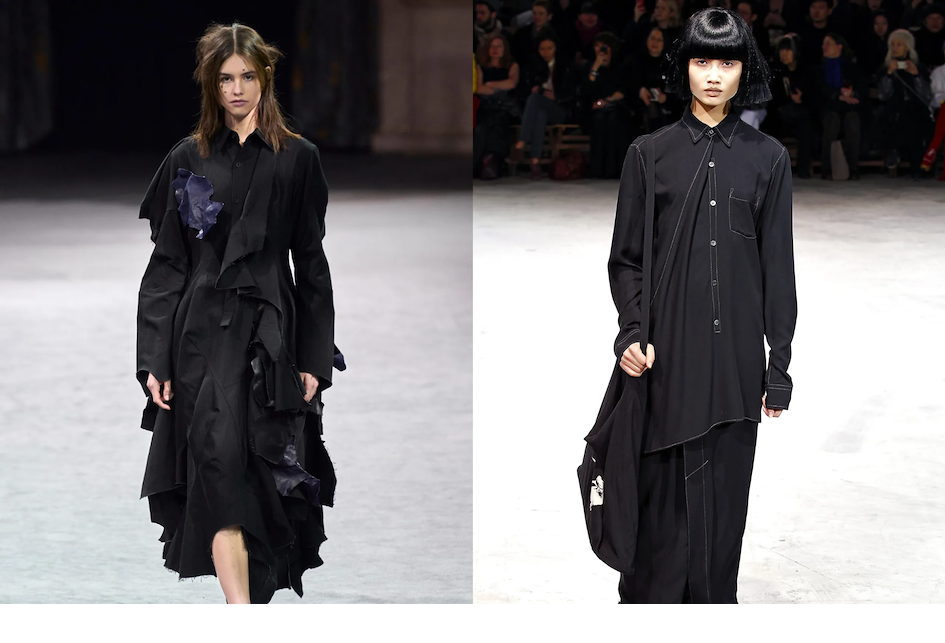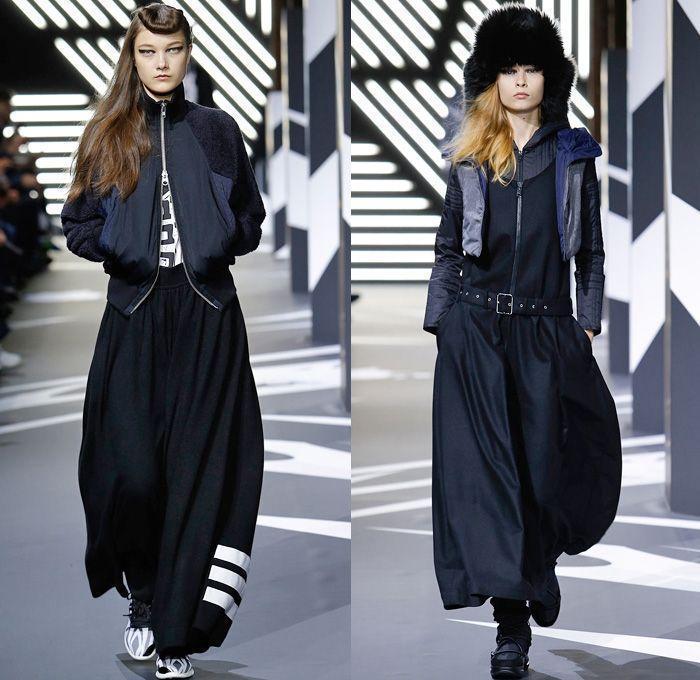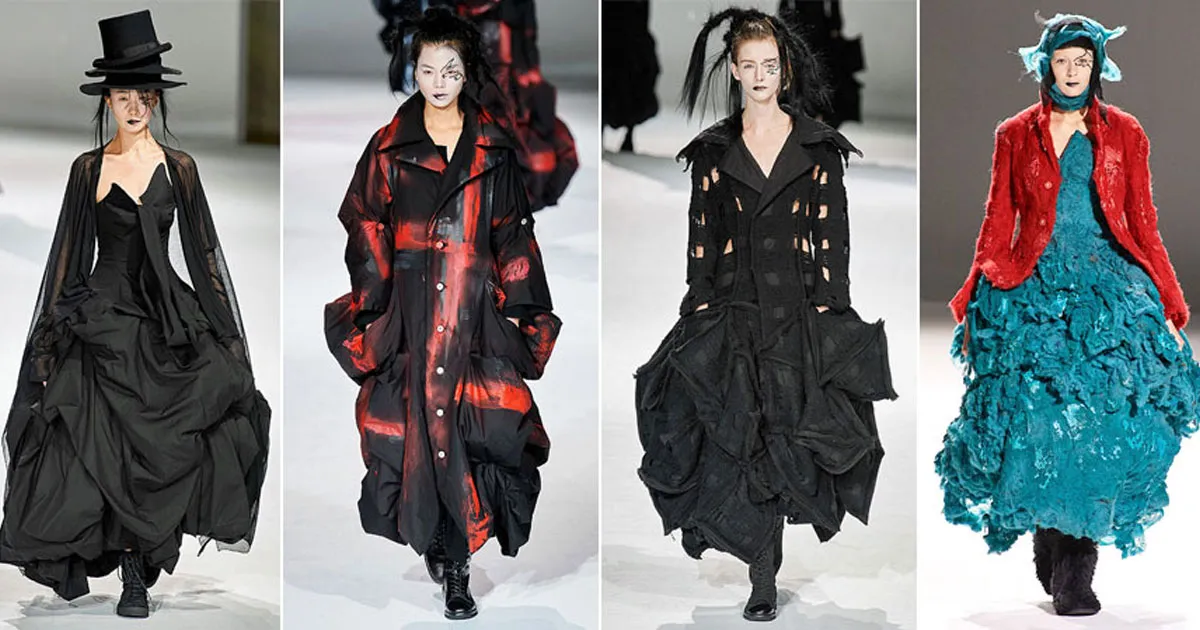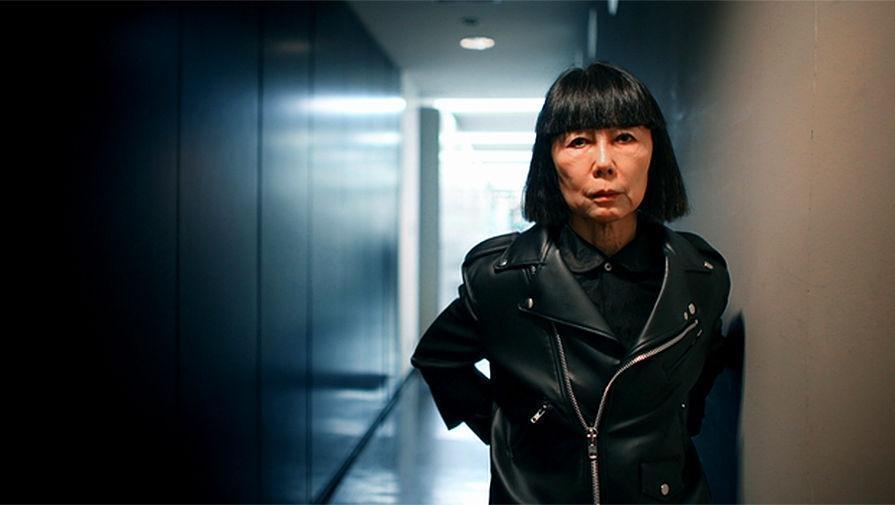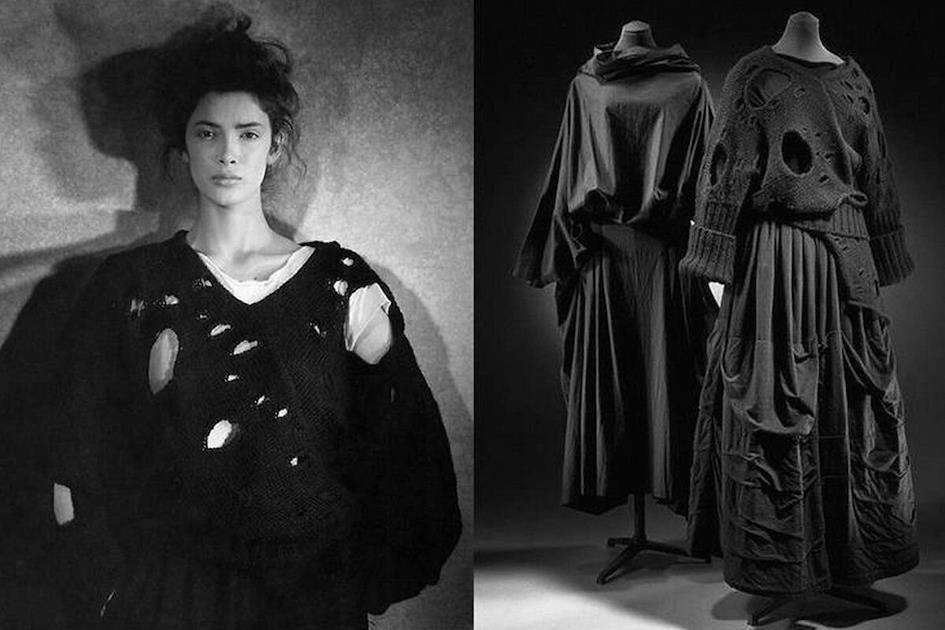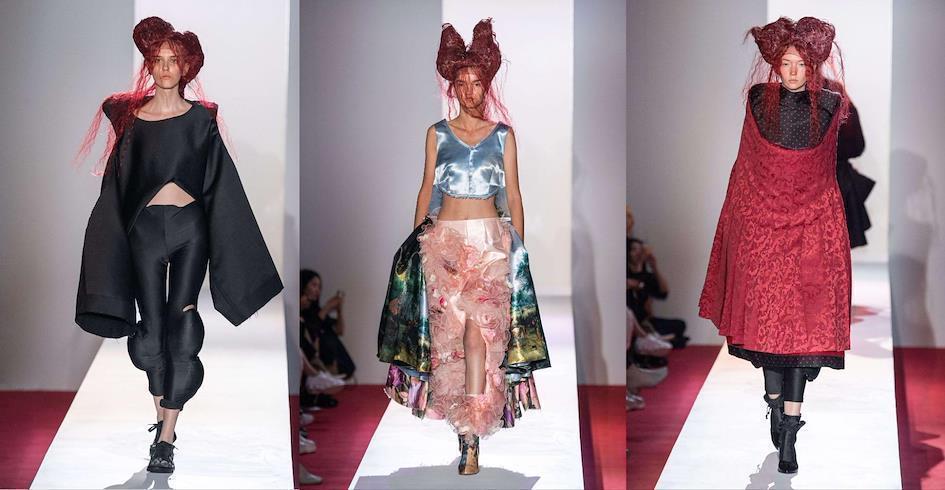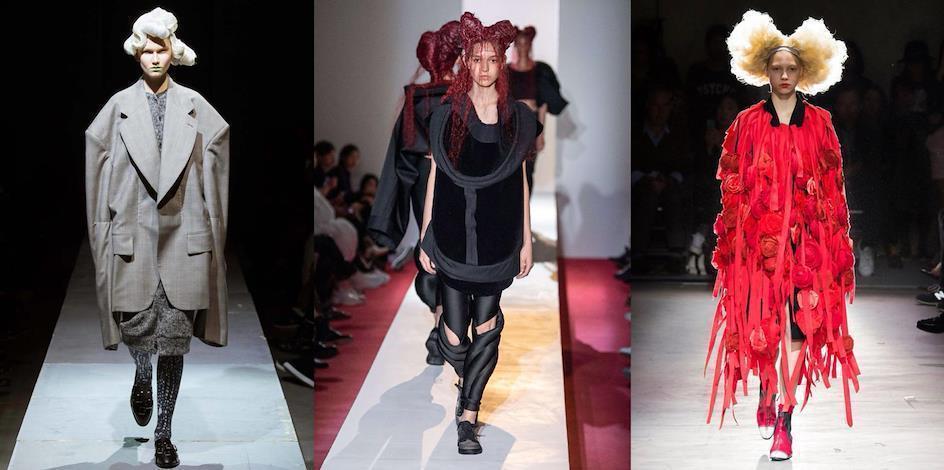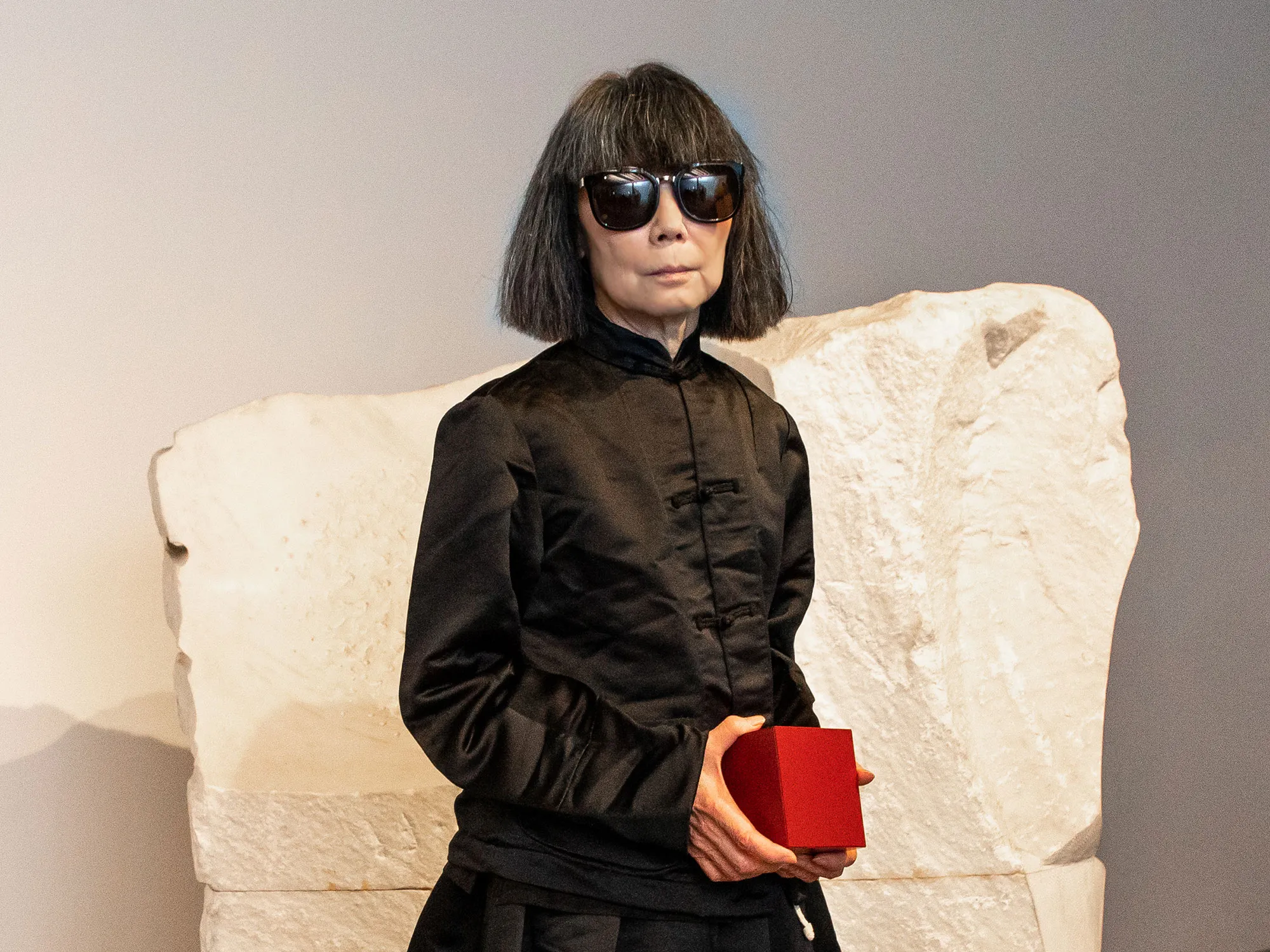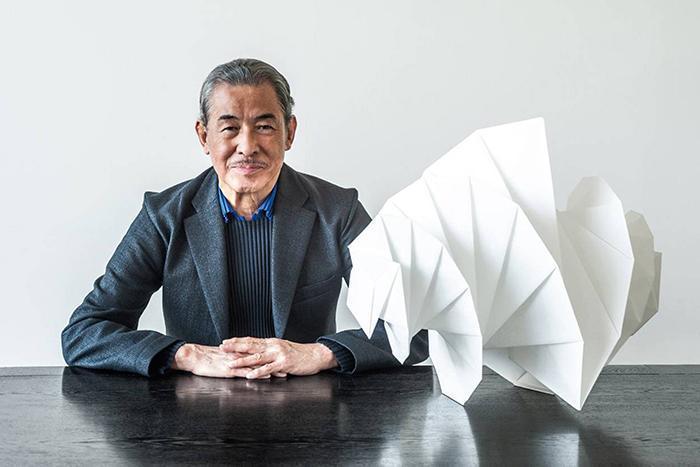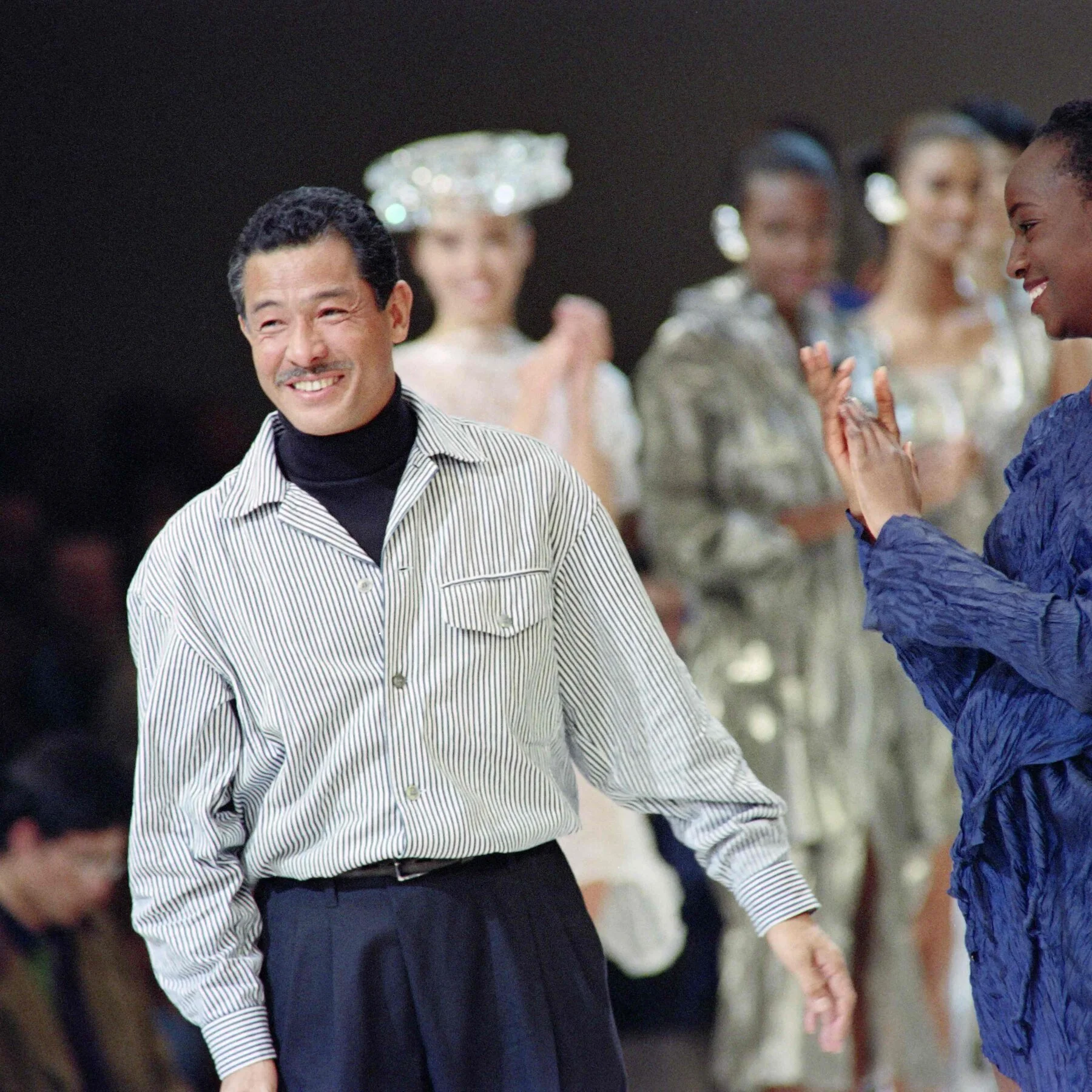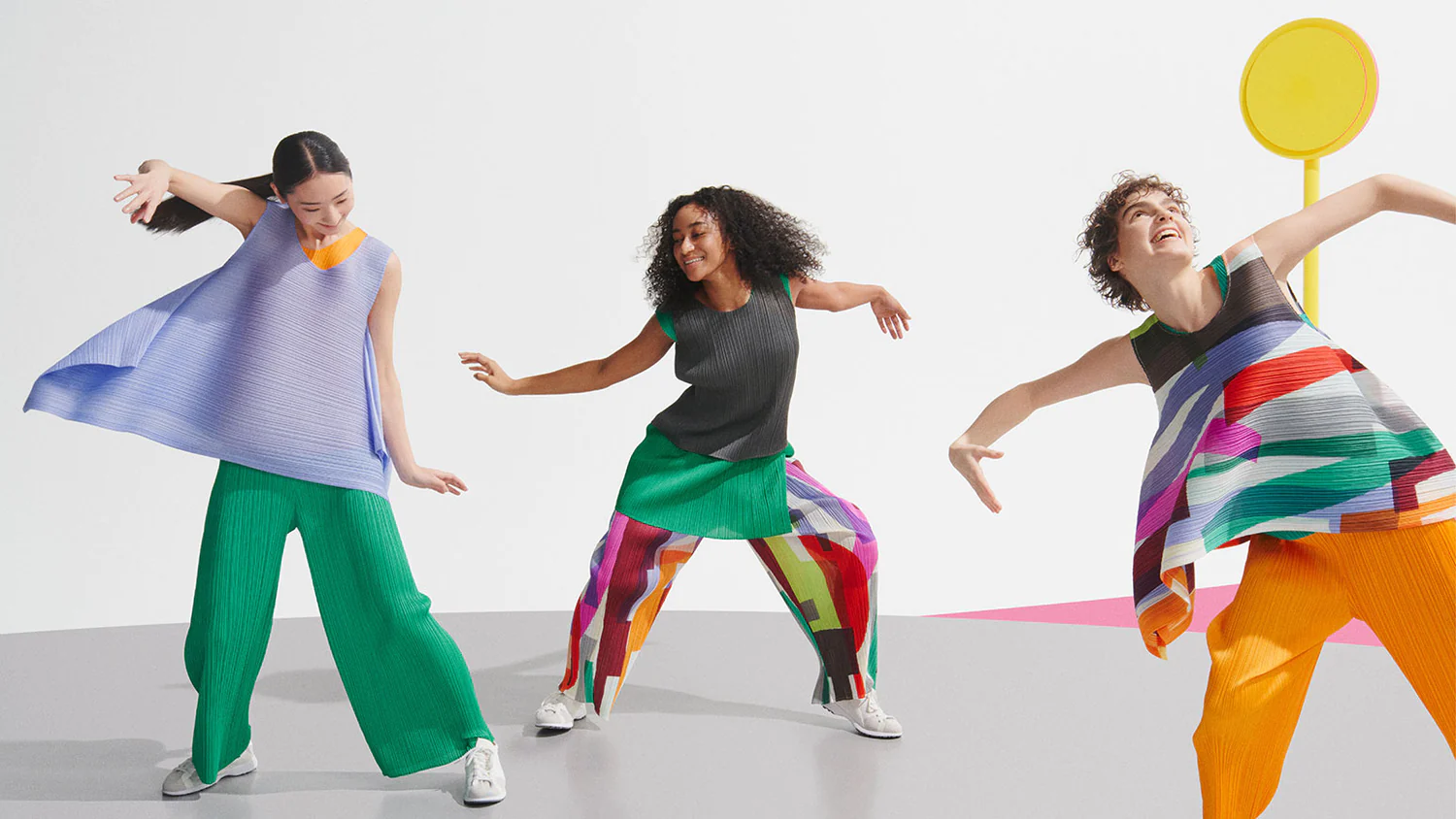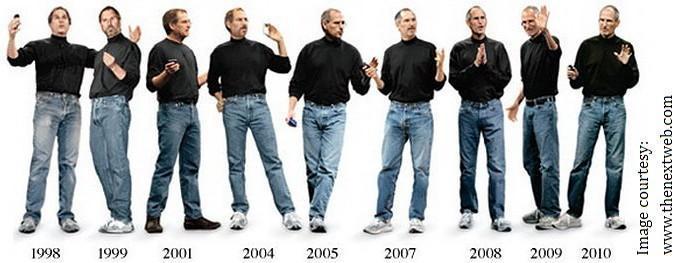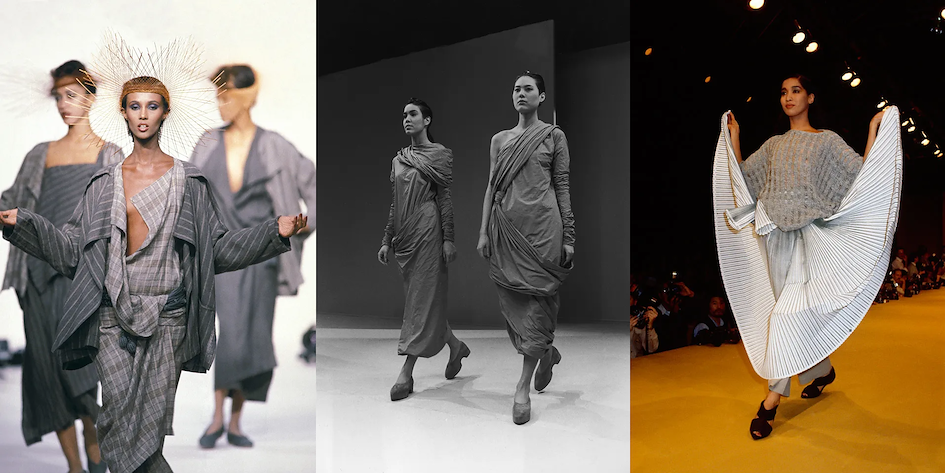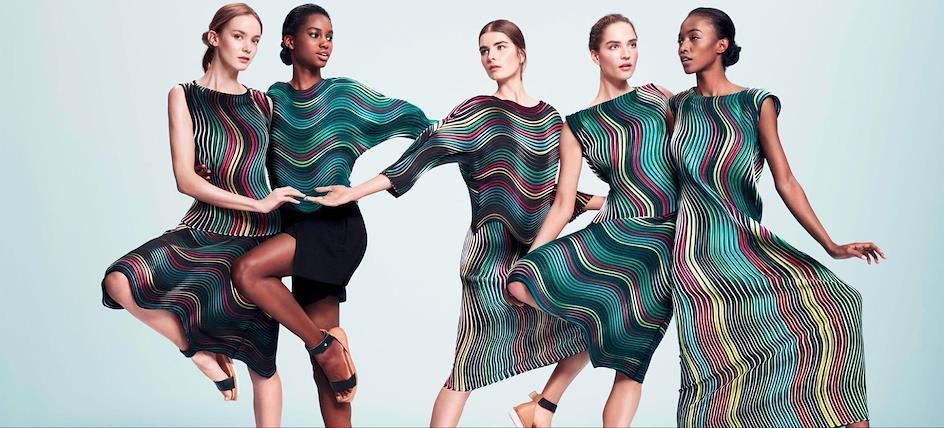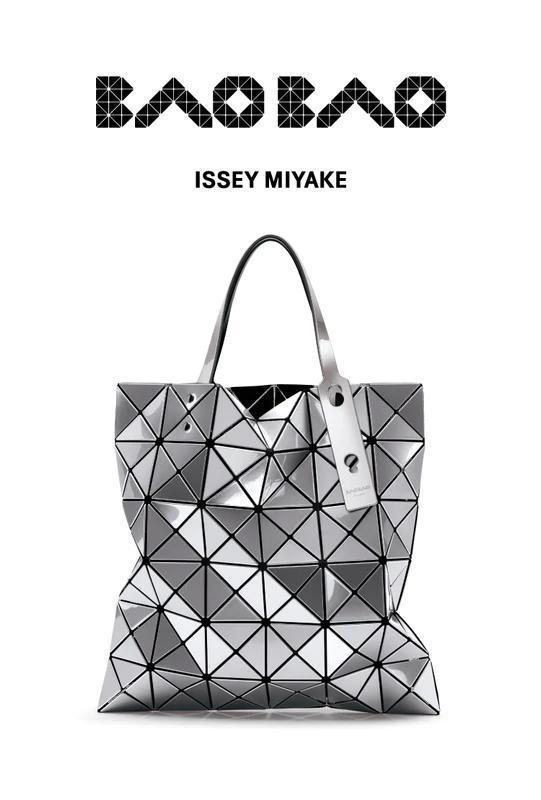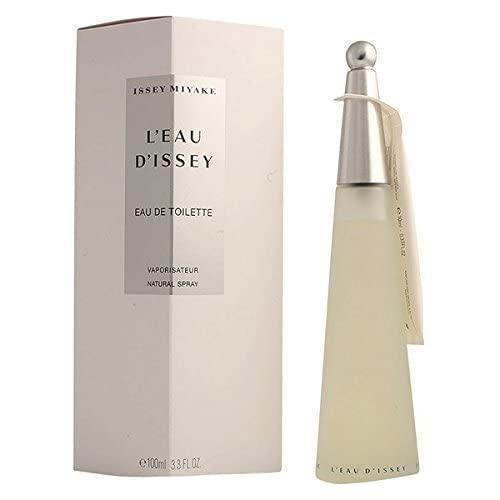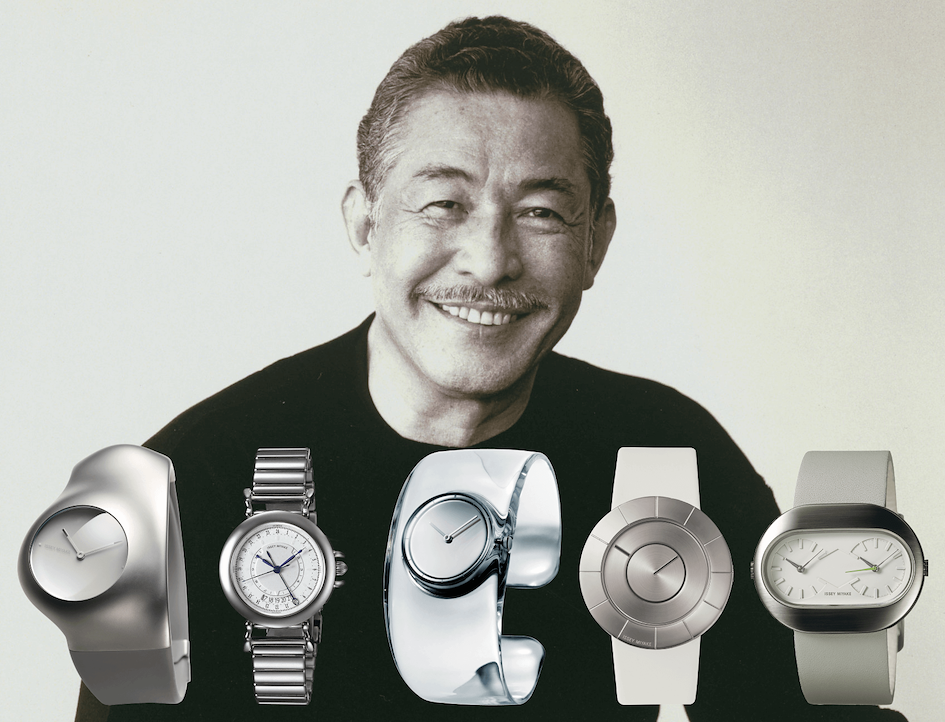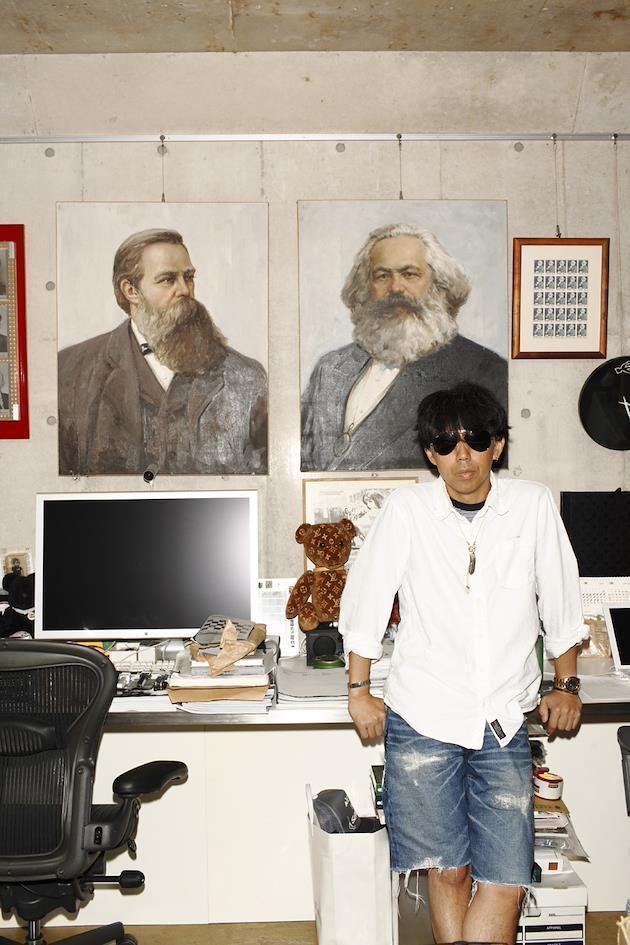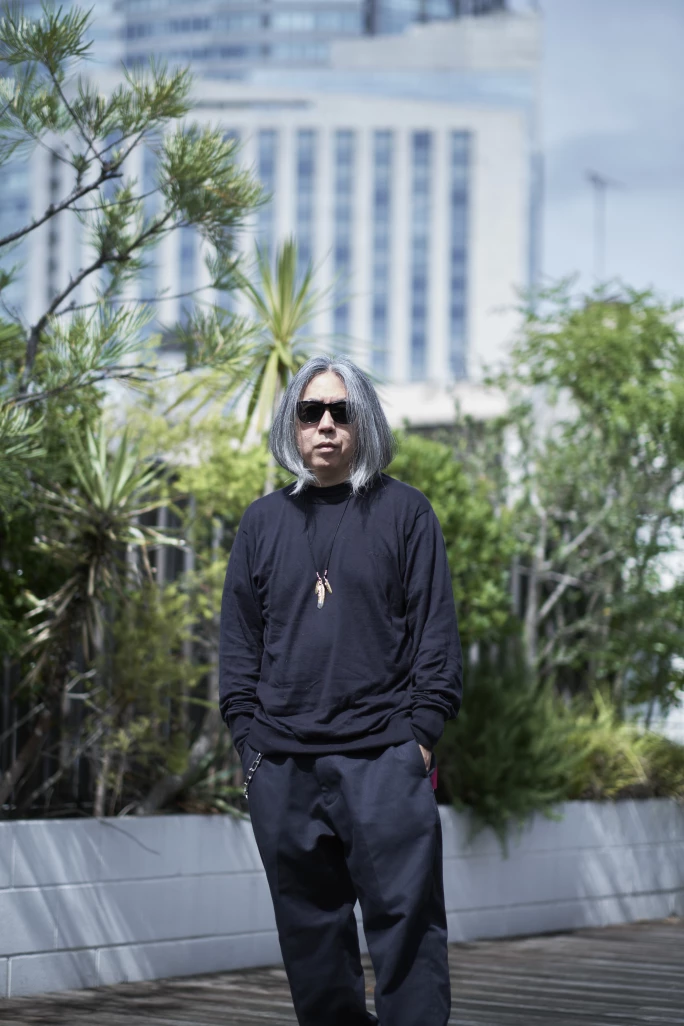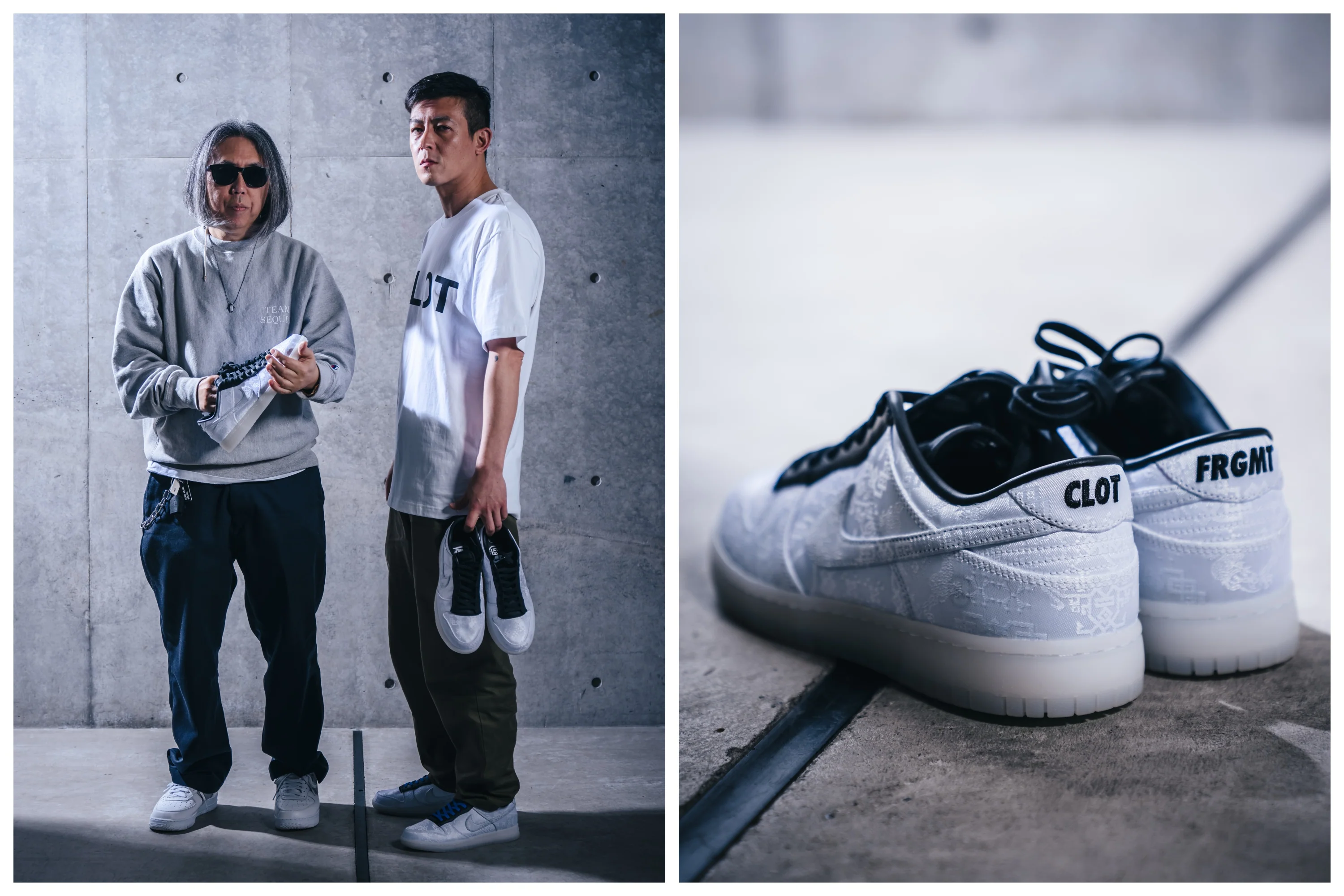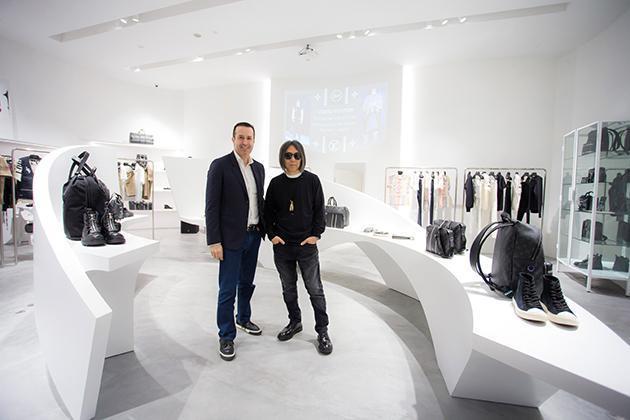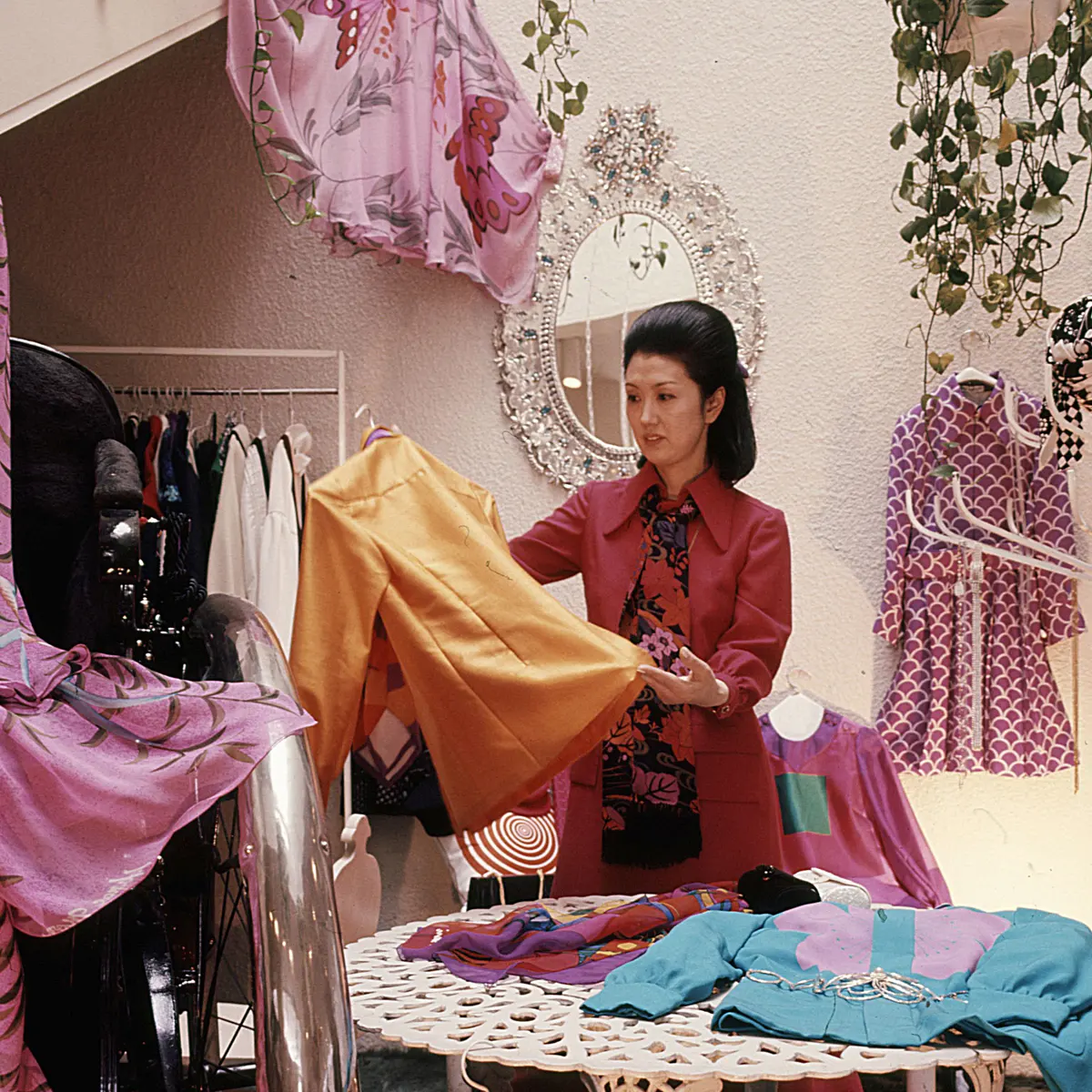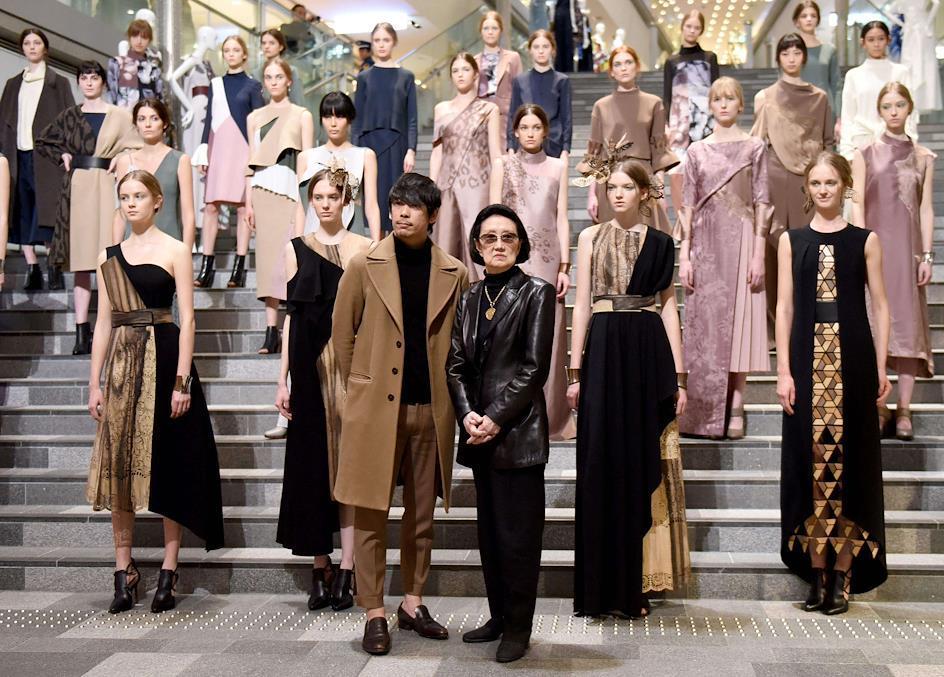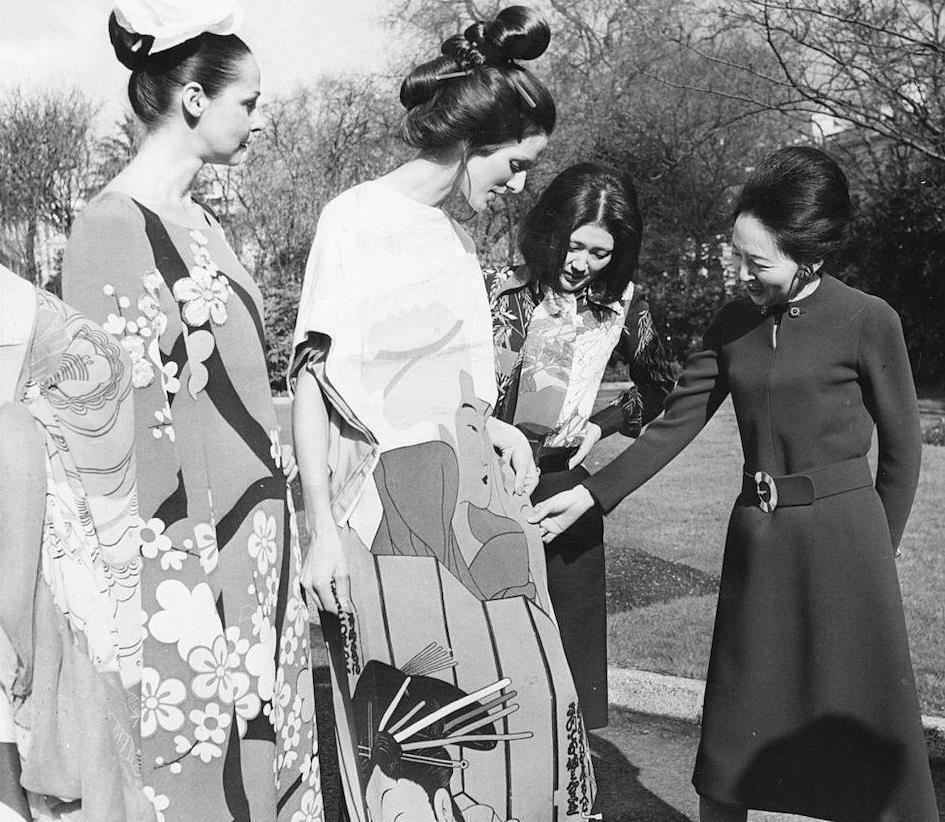[ad_1]
Japanese fashion is highly valued not only in its homeland, but thanks to the efforts of famous Japanese designers, it is now popular all over the world. The fashion houses of Kenzo Takada and Issey Miyake have conquered Paris, the fashion capital of France and the whole world.
Japanese fashion designers Rei Kawakubo and Yoji Yamamoto developed modern trends while boldly experimenting with traditional Japanese motifs combining European avant-garde.
In this article, learn all about what is Japanese fashion, how it developed, and how Japanese clothing designers impacted the global catwalk of success.
Japanese Fashion Designers
From the Heian era to Paris
Japanese fashion has come a long way, incorporating various elements of both Chinese and Western clothing, which harmoniously blended with its traditional styles. The very first clothing in Japan, as in many ancient cultures, was primarily made from leather. Later, it was replaced by fabric, which was initially woven by hand and later produced using factory methods.
Kimono has its origins in the Heian period (8th-12th centuries) when Japan experienced what is known as the Golden Age. During these times, Japanese culture flourished with art, poetry, and craftsmanship skills. Of course, clothing was not neglected as it is an essential aspect of everyday life.
From being a simple everyday necessity, clothing evolved into something more significant, emphasizing wealth and status. This period can rightfully be considered the birth of Japanese fashion, and later, the Heian era became a source of inspiration for well-known modern Japanese clothing designers.
During the Heian era, Japan actively borrowed elements from Chinese culture, leading to the popularity of the fashionable attire of Japanese aristocrats known as “junihitoe.” This attire was a kimono without a lining, made from several layers of Chinese silk called “hinu.” The fashion of that time dictated that the wealthier and more influential a woman was, the more layers her junihitoe would have.
Red, yellow, and green were the most popular colors for this attire, a color palette that would later be willingly inherited for his work by designer Kenzo Takada. The number of layers in junihitoe could range from 7 to 40, and this clothing was incredibly heavy and uncomfortable. In the future, Rei Kawakubo would borrow the idea of using multiple layers of fabric for her garments because, as in fashion today and a thousand years ago, sacrifices are often required!
(Photo: Juni-hitoe – the squeak of fashion of the Heian era)
Later, ordinary Japanese women wore “kosode,” a single-layer cotton kimono that was much simpler, lighter, and more comfortable. That’s why this clothing became more common and was worn daily. Then, during the Edo period, men’s variations of kosode appeared, and it is considered the precursor to modern kimono.
It was not as extravagant and fashionable as “junihitoe,” but it was much more practical. Traditionally, the bright and recognizable patterns for kimono were hand-painted with dyes, and it wasn’t until the mid-20th century that factory printing methods were adopted.
Gradually, Western fashion began to dominate the Japanese clothing market. Skirts, blouses, dresses, and pants gradually replaced traditional attire, initially as workwear and later in everyday life, largely due to their practicality.
After World War II, Japanese clothing designers began actively working with these Western concepts, giving them a distinctly Japanese flavor. In the 1970s, Japanese fashion designer Kenzo Takada embarked on a journey to conquer the capital of European fashion – Paris.
Two directions of Japanese fashion
Modern Japanese fashion consists of two key directions:
-
Traditional Japanese Clothing (Wafuku): This category includes items that are closely associated with Japanese culture. Various forms of kimono, yukata, haori (a type of kimono jacket), hairpins known as kanzashi, sandals like zori and geta, and more. While wafuku was once worn as everyday attire, in contemporary Japan, it has been replaced by Western clothing for daily wear. Kimono and yukata are now primarily worn on special occasions, festivals, ceremonies, and in traditional Japanese ryokan accommodations. They are cherished for their cultural significance.
- Western Clothing (Youfuku): Western-style clothing, known as “Youfuku,” arrived in Japan at the turn of the 19th and 20th centuries. From the second half of the 20th century, it firmly established itself in the wardrobes of Japanese fashion-conscious individuals. Tokyo’s Harajuku district became synonymous with Japanese fashion and encompasses a multitude of different street fashion styles, including Lolita, Gyaru, Himekaji, Angura, Decora, and more.
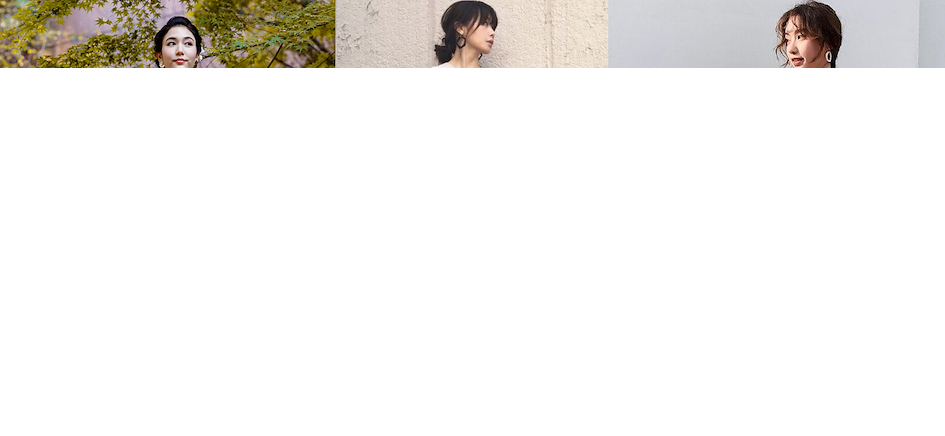
Also Read: POPULAR JAPANESE LIFESTYLE AND FASHION SELECT SHOPS
Contemporary Japanese Fashion encompasses the wide range of modern and innovative fashion styles developed in Japan. Japanese designers and brands are celebrated for their creativity and ability to blend traditional elements with avant-garde and cutting-edge designs. This direction includes high fashion brands like Comme des Garçons, Issey Miyake, and Yohji Yamamoto, known for their artistic and unconventional creations. Additionally, Japanese street fashion, such as the Harajuku style, continues to influence global fashion trends with its unique and eclectic looks.
(Photo: Harajuku style – gothic lolita, himekaji and gyaru)
Many Japanese clothing brands are easily recognizable worldwide today. Brands like KAPITAL, Supreme, BAPE (A Bathing Ape), Kenzo, Yohji Yamamoto, Comme des Garçons, and others have gained international acclaim. They offer both popular ready-to-wear items and haute couture clothing designed by renowned Japanese fashion designers. Let’s take a closer look at some of these popular Japanese fashion brands:
-
KAPITAL: Known for its denim and workwear-inspired designs, KAPITAL blends Japanese craftsmanship with American vintage aesthetics, creating unique and sought-after clothing.
-
Supreme: Originally a skateboarding brand, Supreme has become a global streetwear icon, collaborating with various artists and designers and producing highly coveted collections.
-
BAPE (A Bathing Ape): BAPE is famous for its bold and distinctive streetwear designs, featuring camouflage patterns and its iconic ape logo. It’s a prominent brand in the street fashion scene.
-
Kenzo: Kenzo Takada, the founder of Kenzo, was one of the first Japanese designers to conquer Paris. The brand is known for its colorful and vibrant designs.
-
Yohji Yamamoto: Yohji Yamamoto is a renowned designer known for his avant-garde and deconstructed clothing. He is a prominent figure in high fashion and has left a significant impact on the industry with his “black” philiosophy.
-
Comme des Garçons: Rei Kawakubo, the founder of Comme des Garçons, is celebrated for her avant-garde and unconventional designs. The brand pushes the boundaries of fashion and has a global following, especially with western celebrities.
These designers and brands have played a crucial role in shaping the global fashion landscape and continue to influence trends and styles around the world.
Want to shop Japanese fashion? Sign Up Now!
Kenzo Takada: innovation, eccentricity and international recognition
“My style is the destruction of Haute couture.” – Takada Kenzo
For Japanese fashion enthusiasts, the name Kenzo Takada is an icon because he pioneered Japanese fashion in Europe. Working in the field of women’s fashion design in Paris was always his dream. In the mid-1960s, the young Japanese fashion designer Kenzo moved there to begin his creative journey. Renting a small apartment in Montmartre, he took his first steps in pursuit of success. During that time, he worked as a freelance designer for several Parisian brands. This experience proved to be quite successful, and by 1970, Kenzo opened his own store, which he named “Jungle Jap.”
In 1970, the young Kenzo Takada decorated his first store, Jungle Jap, in Paris in the style of his favorite painting by Henri Rousseau, “The Dream.” The name “Jungle Jap” was formed from a nickname given to the designer by his French colleagues – they referred to him as “Jap” (Japanese). Additionally, Kenzo had a deep fondness for jungle themes. His favorite painting, which inspired the design of many of his pieces, was Henri Rousseau’s “The Dream,” depicting a girl in the jungle with tigers.
Later, the tiger became one of the brand’s symbols, and its image can be found on many items from Kenzo’s collections. The renowned Japanese fashion designer also released a charitable collection called “Rare Stripes,” with proceeds going to a tiger conservation fund.
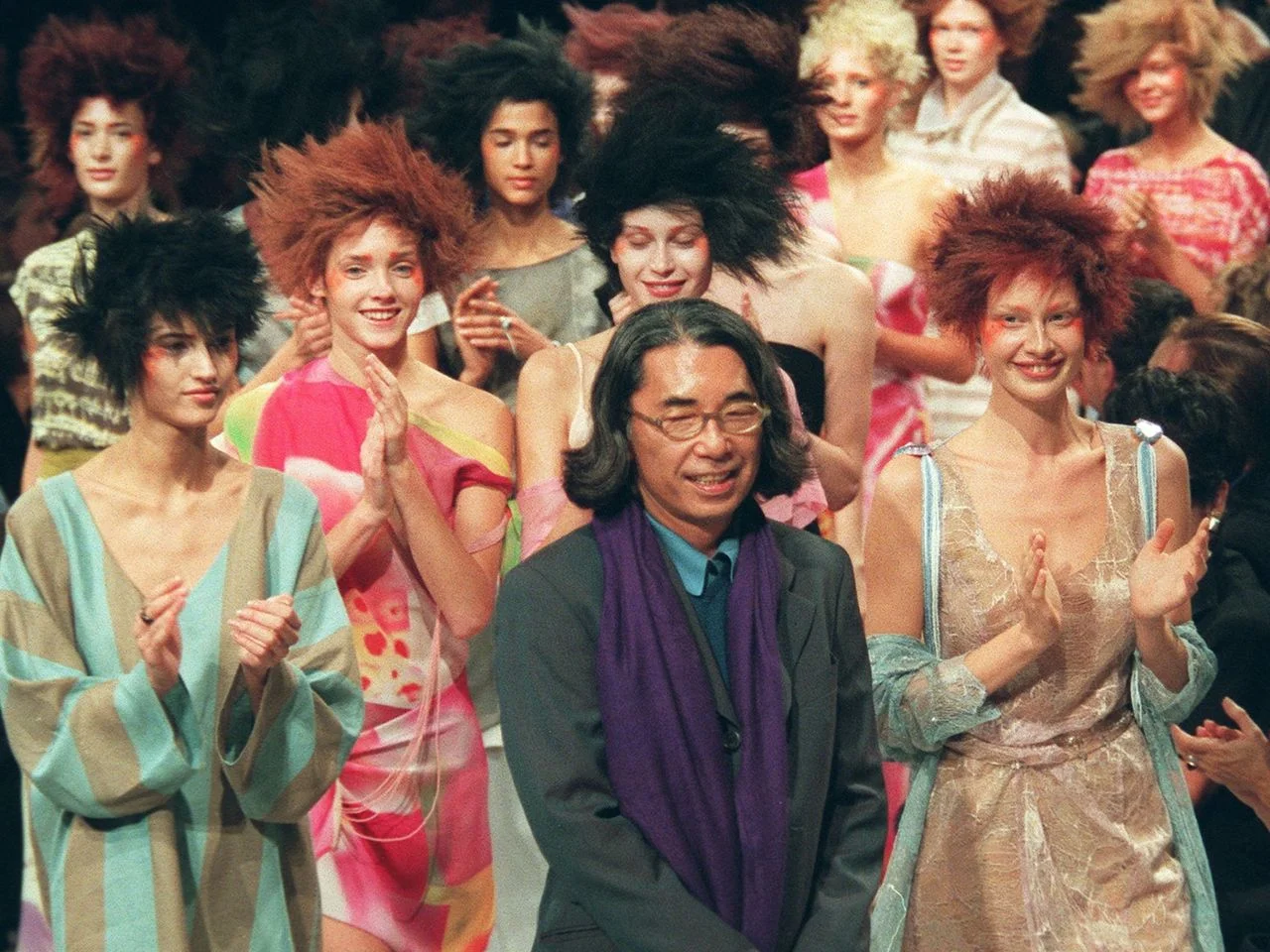
Kenzo’s clothing was known for its eccentric design, which was considered avant-garde for its time. It featured bright colors with green and red as dominant hues, jungle-inspired prints, and innovative shapes. Initially, these designs may have seemed unusual to the public, but they quickly gained popularity.
In the 1980s, Kenzo entered the American market under the brand name “Kenzo” because the name “Jungle Jap” was deemed racist in the United States. Under this brand, the designer made history, transforming it into a full-fledged fashion house based in Paris. This fashion house not only produces clothing but also offers accessories, cosmetics, and perfumes.
(Photo: Clothing featuring jungle and tiger motifs in its colors is a distinctive hallmark of the designer.)
The model on the cover of the French magazine Elle in 1970 is wearing Kenzo Takada’s signature floral dress (on the left), and on the right is the recognizable logo of the brand featuring a tiger.
In the design of clothing, Kenzo Takada preferred wide, loose silhouettes compared to fitted garments. He avoided using zippers, experiments with shapes, and combined traditional Japanese attire with Western styles.
For example, he merged kimono and short coats. Kenzo Takada’s style is often described as deconstructed couture because of his desire to break the traditional principles of high fashion, disassemble clothing from various cultures into elements, and combine them in his outfits. The designer created knitted garments, and clothing with short sleeves, and also fused the aesthetics of children’s clothing with adult fashion.
Kenzo’s outfits are bold and bring together elements from various cultural styles. The Japanese designer had a penchant for transferring the color patterns of kimono and Arabic clothing onto Western garments. This simple yet innovative approach yielded unique and distinctive outfits that quickly appealed to both celebrities and the mass market.
Kenzo Takada was one of the pioneers who began selling ready-to-wear clothing during his fashion shows. This allowed attendees not only to appreciate conceptual haute couture but also to purchase ready-made, ready-to-wear pieces on the spot.
Kenzo Takada was also one of the pioneers who transformed his fashion shows into true spectacles. He sold tickets to these shows, much like theater performances, held fashion shows in circus tents, and even made appearances before the audience, sometimes riding an elephant.
Alongside these vibrant performances, Kenzo Takada introduced the idea to the fashion community that fashion is a free form of self-expression, and individuals should dress in a way that they like.
In 1993, Kenzo Takada decided to sell his brand to the LVMH group while remaining the designer until 1999. Even after his departure, the Kenzo brand continues to be a top player in the world of Japanese fashion, thanks to the invaluable contributions of this great Japanese designer, whose name is forever etched in the fashion capital of the world.
Yohji Yamamoto: minimalism, structure and sophistication
“Black is simultaneously modest and noble. It is effortless, comfortable, and at the same time mysterious. But most of all, black is a message to others: I do not bother you, and you do not bother me.” – Yohji Yamamoto
Indeed, the philosophy of the Yohji Yamamoto brand prominently features the color black. The renowned Japanese fashion designer primarily works in this color palette. This choice was directly influenced by the designer’s difficult childhood – he experienced the war and lost his father during that time, and he lived through the bombings of Tokyo. Ever since his mother became a widow at the age of 27, she dressed only in black. His mother became the most important person in Yohji’s life and an example of a woman who needed protection from the harsh world, which significantly influenced his worldview and his subsequent work as a fashion designer.
Yohji Yamamoto grew up in Tokyo’s Kabukicho district, known for its entertainment industry, and he strongly disliked the fashion of the local women, who dressed like dolls to please men. The fashion designer was determined that his clothing would be different – it would protect women and give them the freedom of self-expression rather than attracting unnecessary attention.
That’s why you won’t find fitted or figure-enhancing pieces in his collections. Loose silhouettes, unconventional cuts, eclectic shapes, and the elegant black color became the designer’s signature. He also enjoys dressing women in men’s clothing, creating unisex-style collections. Yohji Yamamoto’s clothing intentionally conceals the body’s forms and figures, aiming to protect women from the gaze of others.
Like Kenzo Takada, in the 1970s, Yohji Yamamoto attempted to make a mark in Paris. He presented his collection alongside Rei Kawakubo, but he wasn’t successful on his first try. The discerning Parisian audience labeled the strict silhouettes and unconventional tailoring of Japanese designers as “Hiroshima chic” or even clothing for refugees.
Returning to Japan, the designer received a much warmer reception. The Japanese audience appreciated his minimalist, structured style that stood out against the colorful and extravagant competition. This is how Yohji Yamamoto became one of the most prominent representatives of Japanese deconstructionism in fashion.
Yohji Yamamoto’s collaboration with Adidas changed the way we perceive sportswear. The designer found traditional sportswear unattractive, and his collection called Y-3 aimed to change that perception. If you’re looking for stylish sportswear or love athleisure style, you can choose items from this Japanese designer with ZenMarket.
Yohji Yamamoto’s Y-3 sports line with Adidas offers clothing that seamlessly fits into the unisex concept. Whether for women or men, it’s not about flashy eccentric fashion but rather a way to stylishly shield oneself from the intrusive world.
Shop Yohji Yamamoto From Japan
Rei Kawakubo: avant-garde style and fashion breakthroughs
“More and more, the machines make fabrics that are uniform, flawless textures. I like it when something is not quite right, not perfect. Hand knitting is the best way to achieve this goal. Since it’s not always possible, we sometimes loosen the screws on the machine here and there so it can’t do exactly what it’s supposed to do.” – Rei Kawakubo
Rei Kawakubo’s creations are pure avant-garde, taking on the most diverse and whimsical forms. Her designs differ from the conventional European fashion: fluid shapes, clothing parts that don’t conform to realistic proportions, chaotic hemlines, undefined waists, and unconventional tailoring make Rei Kawakubo’s works a Holy Grail for fans of Japanese wabi-sabi aesthetics. One of her most recognizable works is a black knitted sweater with holes, which she calls lace. Rei Kawakubo was one of the first to set the trend for ripped clothing.
The concept of wabi-sabi suggests that beauty is not perfect, practical, or functional, much like Rei Kawakubo’s creations: some of them intentionally lack important clothing elements or leave seams uncovered. Her dresses are often made from multiple layers of fabric, just like traditional Japanese junihitoe.
Furthermore, clothing may deliberately be torn or adorned with holes in prominent places: this is how Rei Kawakubo conveys the idea, which in Japanese Buddhism is called Mu (無), or “nothingness”: the meaning is that meaning is absent. Rei Kawakubo experiments with unconventional cuts and intentionally removes some familiar elements of clothing, such as sleeves.
The name “Comme des Garçons,” under which Rei Kawakubo releases her designer clothing, translates from French to “Like Boys,” perfectly conveying the brand’s philosophy of striving for unisex and gender neutrality.
Rei Kawakubo’s avant-garde design is inspired by a commitment to gender neutrality. In some sense, Rei Kawakubo’s approaches are similar to Yohji Yamamoto’s, but she prefers a much more avant-garde design.
Rei Kawakubo is a true innovator in fashion, and her innovations in the fashion industry go beyond just clothing. She is also involved in perfumery, creating fragrances based on scents that no one had used before. How about perfumes that smell like ashes, metal, or burnt rubber?
The scope of Rei Kawakubo’s imagination knows no bounds, yet in her personal life, she remains extremely mysterious and private, rarely even appearing at her own fashion shows. In her opinion, she creates clothing for empowered women who dress as they please and don’t care whether it pleases others. Notes of indifference, elegant asymmetry, and attractive chaos are the main highlights of Rei Kawakubo’s style, making her a recognized genius and innovator in the eyes of many admirers of Japanese fashion and fashion enthusiasts worldwide.
Shop Comme Des Garcons From Japan
Issey Miyake: technology, environmental consciousness and design experiments
“The goal I start from is the idea of use. It’s not recycling; it’s re-using.” – Issey Miyake
All renowned Japanese fashion designers are changing the fashion world and making it more multifaceted. Issey Miyake is one of the chief fashion innovators who has made a bet on technology, boldly experimented with clothing production methods, and initiated the trend of ecological consciousness in fashion. His concern extended beyond how clothing looks to how the processes of its production contribute to the well-being of the environment.
His commitment to nature is reflected in collections of garments made from environmentally safe and recycled materials such as metal, plastic, rubber, and paper. Unconventional materials that are atypical for high fashion have become a part of his creations, as well as unique fabrics developed by his own research center.
Pleated clothing is Issey Miyake’s signature style. Issey Miyake adheres to the philosophy of the “single piece of cloth.” To create good clothing, it’s important to track the creation of the fabric from the very first thread. The boutique for the Issey Miyake Pleats Please clothing line is entirely made from aluminum obtained by recycling old cars. Furthermore, Pleats Please experiments with Issey Miyake’s favorite technique – pleating – and applies it to various types of fabrics.
Pleating involves decorating clothing with folds that resemble a harmonica or zigzag. In pursuit of practicality and ease of care for pleated garments, Issey Miyake devised a special pleating technology using steam. Thanks to this innovation, exquisite garments can be washed like regular clothes without fear of damage or loss of shape. One of the most famous pieces by the designer in the Pleats Please line is the pleated tunic featuring a depiction of Hokusai’s “The Great Wave off Kanagawa.”
One of his most famous works is Steve Jobs’ black turtleneck, which Jobs wore every day. Despite Issey Miyake’s belief that clothing should be practical and comfortable, he also thinks that there’s no reason to limit the flow of imagination – outfits should be vibrant and inspiring.
This is evident in the expressive colors, bold forms, and unconventional cuts of his clothing, which, despite their eccentricity, remain easy to care for. Additionally, the couturier combines the aesthetics of traditional Japanese clothing with Western styles in his works. Issey Miyake’s outfits impress with their creativity, diversity of forms, and references to world art and Japanese traditions. The designer’s creativity is multifaceted; he is known for both extravagant and simple clothing.
In Issey Miyake’s garments, kimono silhouettes are often playfully reinterpreted. An important concept in the designer’s fashion philosophy was that clothing on a person should not have a static form; it should be fluid and flexible. This is where his love for both pleats and smooth, undulating silhouettes comes from. Issey Miyake believes that clothing should be dynamic and move along with the wearer.
For his whimsical garments with multifaceted abstract forms, he often uses wireframes, metallic coating, and some stylized to look like crumpled paper. Among his other innovations are three-dimensional seamless construction clothing, often referred to as “origami clothing,” and the Bao Bao bag made of triangular plastic panels. In addition to clothing, the Issey Miyake fashion house is known for its fragrances and watches.
Shop Issey Miyake Designs From Japan
Hiroshi Fujiwara: “Godfather of Harajuku”, collaborations and streetwear
“I believe in the power of collaboration. It’s about bringing different worlds together to create something unique.” – Hiroshi Fujiwara
Hiroshi Fujiwara is a fashionista, musician, DJ, and designer well-known as the “GodFather of Harajuku“. Fujiwara was born in Ise and moved to Tokyo when he turned eighteen, where he stood out in the street fashion scene since then.
Hiroshi Fujiwara is a Japanese fashion and music influencer. He was inspired by punk rock and DJing during trips to London and New York in the 1980s. In Japan, he noticed a gap between high-end fashion and street culture. He started DJing with his own records and founded the clothing line Goodenough in 1989, which became popular in Harajuku. Fujiwara also helped open a store called Nowhere, featuring streetwear and international brands.
He has a significant influence on Japanese street fashion and the global streetwear culture. Fujiwara is known for his work in fashion design and collaborations with various brands, including Nike, Fragment Design, and Moncler. He played a significant role in changing Japanese street style by making simple items like T-shirts and sneakers fashionable.
He has remained influential for over 20 years and has worked with luxury and major brands like Louis Vuitton, Beats by Dre and Starbucks. His website, Honeyee.com, is a popular hub for street fashion online. His contributions to streetwear and his unique sense of style have made him a respected figure in the fashion industry.
Also Read: THE TOP 10 JAPANESE STREETWEAR BRANDS YOU NEED TO KNOW OF
(Photo: Hiroshi Fujiwara collaborates with Louis Vuitton)
Shop Hiroshi Fujiwara Designs From Japan
Hanae Mori: elegant, feminine, haute couture
“Fashion is like food; you shouldn’t stick to the same menu.” – Hanae Mori
Hanae Mori was a renowned Japanese fashion designer known for her elegant and timeless designs. She studied at the prestigious Bunka Fashion College in Tokyo, where she honed her design skills. In 1951, she opened her first boutique in Tokyo, launching her fashion career.
She was the first Asian woman to be admitted to the prestigious Chambre Syndicale de la Haute Couture in Paris, a significant achievement in the world of fashion. Hanae Mori’s designs were characterized by their blend of Japanese and Western influences. She was known for her use of bold prints, vibrant colors, and flowing silhouettes, characterized by graceful silhouettes and intricate detailing.
Hanae Mori’s legacy in the fashion industry continues to influence designers worldwide, and her contributions to haute couture are celebrated. Her brand extended beyond fashion to include fragrances, accessories, and even a line of wedding dresses.
Have you signed up for ZenMarket yet?
ZenMarket is the place to get your hands on goods directly from Japan!
[ad_2]
Source link

